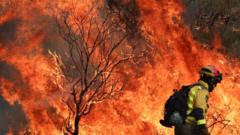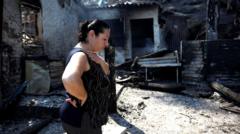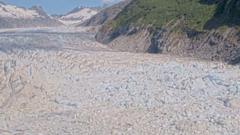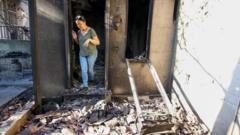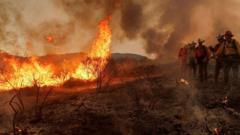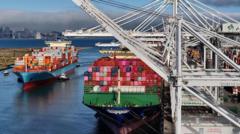The 2025 wildfire season in Canada has been catastrophic, with over 700 active fires and 18.5 million acres burned. As evacuation orders remain in place, particularly in Newfoundland and Labrador, the situation is exacerbated by extreme weather conditions, necessitating urgent action from authorities.
Unprecedented Wildfire Crisis in Canada Continues Amid Warnings and Evacuations

Unprecedented Wildfire Crisis in Canada Continues Amid Warnings and Evacuations
Eastern Canada faces a severe wildfire crisis as multiple regions remain under evacuation orders, with fires spreading rapidly across the landscape.
As thousands flee Eastern Canada due to raging wildfires, the country grapples with what might be one of its worst wildfire seasons to date. Recent alarms have been sounded as two provinces, Newfoundland and Labrador, have imposed mandatory evacuations, with many others advised to remain vigilant as wildfires advance uncontrollably into communities.
According to the Canadian Interagency Forest Fire Center, nearly 700 fires are currently active, and an alarming 18.5 million acres of forest have already been consumed this year, marking the second-most destructive wildfire season on record. While last year saw 31.3 million acres burn by mid-summer, forecasters warn that the current season could continue unchecked through the approaching fall.
This year's wildfire escalation stems from a combination of prolonged dry weather and the lingering effects of previous droughts affecting much of the country, particularly in its western regions of Saskatchewan and Manitoba. The absence of adequate winter snowpack has further dried out the vegetation, transforming it into fuel for fires.
The Shoe fire in Saskatchewan, which erupted in early May, is currently the largest wildfire in Canada, covering an area greater than that of the Grand Canyon. However, a recent change in weather has brought much-needed relief, resulting in rain and cooler temperatures that have helped to contain some fires and reduce new fire ignitions.
In contrast, Newfoundland and Labrador, typically unaccustomed to such fire emergencies, face serious challenges. Fires in these regions, particularly around St. John's, are alarming due to their proximity to inhabited areas, highlighting the dangers associated with the "wildland-urban interface," where human habitation meets flammable vegetation.
A state of emergency persists in these provinces, with high heat and fire warnings also extending to parts of Southern British Columbia, where wildfire activity is increasing. Regional authorities are taking no chances—measures to restrict outdoor activities and reduce fire hazards have been put in place, including prohibiting the use of off-road vehicles in forested land.
While Quebec has seen a respite from fires this year due to favorable weather conditions, the ongoing situation serves as a stark reminder of the evolving threats posed by climate change and the necessity for continued vigilance and immediate interventions to protect both people and nature.


